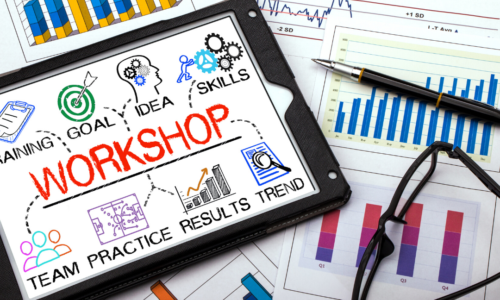LEADING THROUGH VALUES
After completing this lesson, you will be able to:
1. Explain the ideology of culture
2. Summarize the need for values
3. Explain the consequences of having generic values
4. Identify how to determine if the association’s values are working
5. Describe how to use values to manage your team
The tasks below will be automatically checked off once you complete watching the video and taking the quiz.
[progressally_objectives]
The Open Garden Model starts to be meaningful when strong Core Purpose and Core Values statements are able to connect everyone. The organization’s purpose and values should align the full-time employees, those who volunteer, and those who elect to join your organization because they believe in what the organization believes.
Emotional Attachment = Strongest Members
You will find your strongest member base in those who join because they’re moved by your purpose and values, not just because a nice package of benefits is involved. The latter is purely an economic decision, and because it’s not an emotional decision, you will not get the same amount of loyalty, participation and overall contribution from your members. The minute they think they can get a better deal somewhere else, those bargain shoppers will leave.
However, if one joins because they share the same values and big-picture purpose as the organization, they will most likely stay a member for as long as they believe the organization is committed to those ideals.
In addition, non-members will also find emotional alignment with the Core Ideology (Purpose + Values), and that in turn will result in more meaningful and longer-lasting relationships.
CULTURE
An organization needs to be able to answer the why, where and how of their culture.
A Core Purpose answers why the organization exists; a Vision answers where it wants to end up; Core Values are in place to answer how they will get there.
However, there’s more than one way to achieve the same outcome. The way one organization goes about this can be very different from another, and it can even change as the organization evolves.
Values shape and guide what you do day to day and how your team behaves with one another. If you say you value simplicity, then it becomes a guiding force for many decisions you make. That doesn’t mean simplicity is placed above all else, but it becomes an important value everyone knows, supports and can use as a measuring stick when making daily decisions on their own.
There are two parts in establishing the culture of any organization.
Click each tab to learn more.
CORE VALUES
Core Values are the set of behaviors an organization agrees to hold itself up to while pursuing its Core Purpose. Core Values should be immutable, non-negotiable and as solid as the foundational layer of Core Purpose they are built upon.
Key Points for Discovering Your Values
- Determine the behavior you demand from everyone, versus the behavior you absolutely will not tolerate from anyone.
- Core Values should differentiate between organizations, rather than the obvious, more generic ones that do little to inspire or inform your team’s behavior.
- If your values are generic, then they mean nothing. In fact, it’s worse than not having them at all because they will appear insincere and unoriginal, ultimately becoming a joke over time.
Click each tab to learn more about the process.
Using Core Values to Determine Team Alignment
It’s difficult to change a person’s value system, and if they’re not capable of buying into the organization’s Core Values, then everyone inside and outside the organization will question the importance of and commitment to its values.
It may feel counter-intuitive, but instilling polarizing values is an effective way to ensure an association finds a committed staff and member base who are with them to the end. No organization is a great fit for everyone, and if leaders figure that out in the beginning, the organization will be much stronger as it pushes forward.
You should be willing to hire and fire based on Values. You should be willing to recruit and retain members based on your Purpose, but you can also use your Values to measure alignment between external appeal and internal ideals. When out of sync, you know your values are either not being lived inside the organization or they are simply not translating to those outside it.
Values-Productivity Chart
One way to gauge whether a person is a good cultural fit is by using a values-productivity chart.
Download the Open Garden Values-Productivity Chart so you can use it in your own organization!

Where many managers fail is with those in the bottom-right box. Leadership often overlooks or excuses workers who are high in productivity but low in values, because they are top producers. The problem is this group, more than any other, kills your culture by sending a message that the organization does not actually believe in its values. Rather, it prioritizes short-term productivity and profit over the way its people behave.
Watch the following video for a detailed explanation.
[progressally_media media_id='1']
Activities to apply this lesson’s concepts
Click each tab for an activity.
Additional Tools
Download the Open Garden Values-Productivity Chart so you can use it in your own organization! Save and download or print.
CHECK FOR UNDERSTANDING
See if you understand the concepts by completing the quiz. Click Leading Through Values Quiz to begin.
[accessally_course_navigation prev_button='Previous' next_button='Next']
[progressally_note note_id='1' allow_attachment='no']
Share your progress!
[progressally_social_share type='facebook' share_id='1' post_id='42'][/progressally_social_share][progressally_social_share type='twitter' share_id='1' post_id='42'][/progressally_social_share][progressally_social_share type='email' share_id='1' post_id='42'][/progressally_social_share]
[progressally_progress_bar post_id="5606" width="100%" height="25"]

